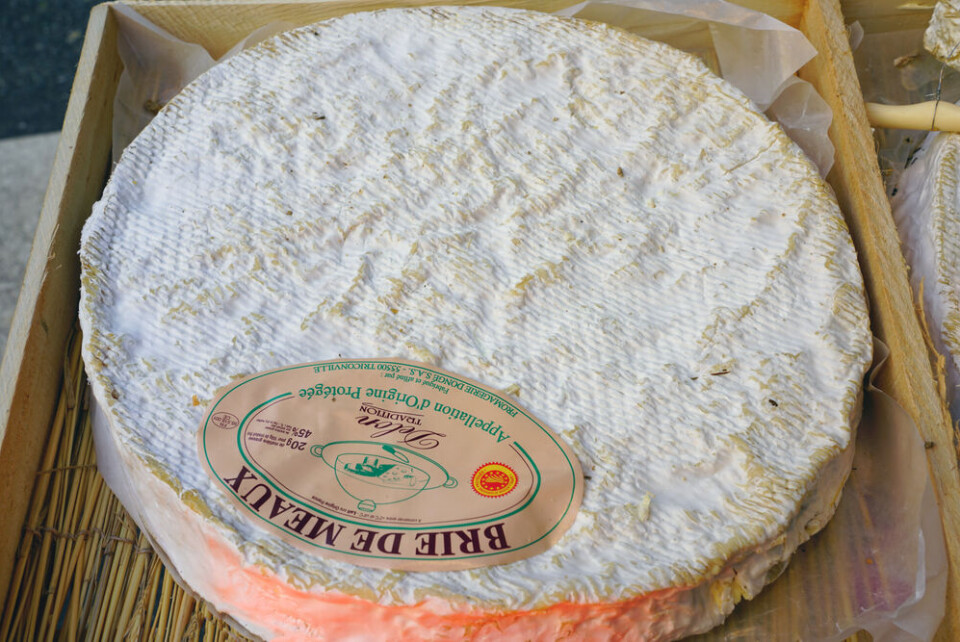-
Egg shortages continue at shops across France
Nearly one in five hypermarkets have faced egg shortages so far this year
-
Artisan cheese of the month, plus local speciality onion confit
Exquisite Fermier au Chablis is crafted with a Chablis wine-washed rind for a refined taste
-
France’s golden fruit: The legacy of Lorraine’s mirabelle plums
Explore the Grallet-Dupic family's historic mirabelle plum farm in Lorraine, producing exquisite eaux de vie, liqueurs, and more
What are IGP/AOC/AOP labels on French products?
Some labels are recognised at European level, others only at national level

Whilst they may seem complicated at first, food quality labels such as IGP, AOC and AOP allow consumers to know they are getting the best products possible.
Each guarantees the origin of a food or drink product, so provides information about a product even before further investigation.
The different labels
The Appellation d’Origine Protégée (AOP) guarantees that the product has been processed and produced in a specific geographical area.
This is a European level label which protects the product name throughout the European Union. In the UK this label is often called the Protected Designation of Origin (PDO)
The French version of the AOP is the Appellation d'Origine Contrôlée (AOC). It protects the product on French territory and it is a step in obtaining the European label.
Note the AOC logo can no longer appear on products that have been registered as AOP, with the exception of wines
The AOP and AOC labels guarantee a very strong link between the product and its terroir.
In France, nearly 500 products are referenced as AOP – these include Camembert from Normandy, Roquefort, chestnuts from Ardèche, walnuts from Grenoble, green lentils from Le Puy, olives from Nîmes, etc.
The Indication Géographique Protégée (IGP) is a European label which designates a product whose characteristics are linked to the geographical location in which at least its production, manufacture or processing takes place.
The IGP label is based on the notion of know-how. Examples in France include Bayonne ham, foie gras duck from the South-West, etc.
History of these labels
The use of labels to categorise food and drink products by quality in this way first began in 1905 to fight against fraud, before in 1935 decree-law on the defence of the wine market created the AOC. The first cheese appellations were recognised in the 1950s.
Subsequently, the French policy of promoting agricultural products inspired the development of European regulations, which saw the establishment of the concept of AOP and IGP in 1992.
Nowadays the labelling is overseen by the Ministry of Agriculture and Food and the National Institute of Origin and Quality (INAO), who work together to confirm products meet the standards required.
What they mean in practice
For consumers these labels guarantee that the producer and relevant players in the sector have complied with all the production conditions.
They can be sure of the precise method of manufacture of the product they are consuming.
The consumer is also guaranteed that this product has a strong link with the territory from which it comes.
The product reflects the specificities of the production area, namely the combination of natural factors (soil, topography, climate, landscape, etc.) and human know-how, that it gets its character.
Products wanting to have a label must therefore demonstrate the link between the characteristics of the product and its geographical origin.
How many products have these labels?
There are nearly 2,000 products with the AOP label in the EU. France had 489 products under AOC/AOP as of 2022, of which 363 were wines.
There are 1,353 IGP products in Europe, including 260 in France. These are mainly agricultural food products (148) and products from the wine sector (75 wines and 2 ciders, plus 35 spirits).
Consult the EU Register of Geographical Indications for a complete list of French and European AOP/AOC/IGP products.
Read also
Geographical protection approved for France’s ‘wine from the midi’
Scallop season begins in Normandy: how to buy and cook them
France’s Mont d’Or seasonal cheese is back
More charcuterie from Corsica awarded controversial EU protection
























